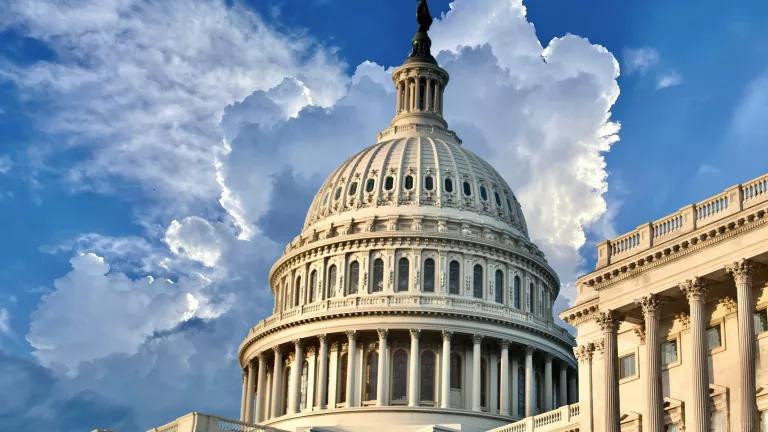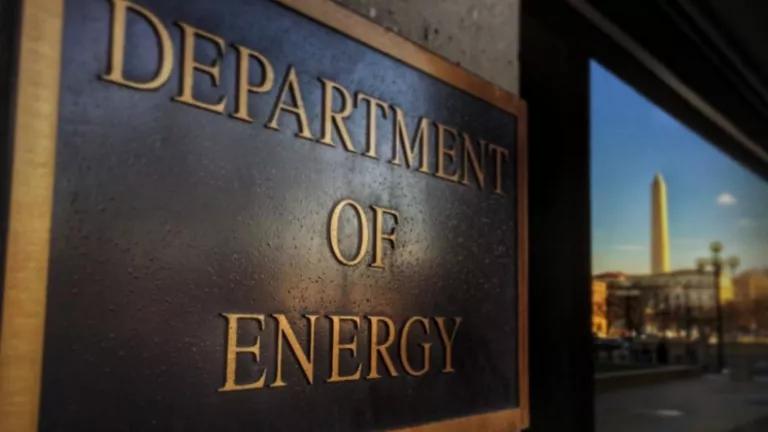This blog was updated to reflect correctly the estimated potential costs to customers over one year if demand response and energy efficiency were excluded from participation in the 2014 Mid-Atlantic capacity market.
The U.S. Supreme Court tomorrow will hear highly anticipated oral arguments over the future of demand response in wholesale energy markets - and the Court's decision in the case could significantly affect consumers' wallets, electric supply reliability, and the fight against climate change.
After a bad decision in a lower court last year, it's like a do-over after your friend misdeals in cards, only with wildly higher real-life stakes. At issue is how and when the Federal Energy Regulatory Commission (FERC) can design rules and incentives that allow consumers to get paid for reducing energy use during high demand periods (more on demand response here).
The quick (and potentially dirty) background
In 2011, FERC issued its landmark Order 745, which set the compensation rules for demand response in wholesale energy markets. (FERC, which oversees most of the nation's transmission grid, had already exercised its regulatory authority over demand response in prior orders.) Under Order 745 and related FERC orders, homes and businesses can bid an agreement to curtail their own energy use - known by some as "negawatts" - into energy markets just like power plants bid in megawatts, often at a lower cost than the power plants can offer. Power plant owners, who were unhappy at the prospect of this competition, challenged Order 745 in federal court. They argued that FERC didn't have any jurisdiction over demand response.
Three years later, in May 2014, the U.S. Court of Appeals for the D.C. Circuit agreed with the power plant owners, deciding that FERC did not in fact have the statutory authority to issue Order 745. The court, in a 2-1 decision over a strong dissent, found that the states had exclusive jurisdiction over demand response.
The D.C. Circuit decision sent shockwaves through the energy industry, injecting uncertainty into established market practices. Prior to the D.C. Circuit's decision, the wholesale demand response industry had been humming along (to the tune of billions of dollars annually) under a workable jurisdictional division of labor between FERC and the states that allowed for relatively effective management of our grid. And we're talking about big money. After the decision, an expert on the markets predicted that removing demand response and energy efficiency participation from the Mid-Atlantic regional capacity market would cost consumers across 13 states $9 billion in just one year!
And it gets worse, environmentally. Demand response resources displace uneconomic fossil-fueled power, and are a key component in the integration of wind and solar power. The decision not only muddied the waters on whether and how demand response can participate in wholesale markets, it also raised questions about the participation of other clean energy resources like energy efficiency.
In a move we supported, FERC asked the D.C. Circuit to reconsider its rejection of Order 745, but to no avail. FERC then requested Supreme Court review last fall, and was supported by our Sustainable FERC coalition, states, consumer advocates, the demand response industry and others. The broad swath of support for FERC demonstrates the high-stakes nature of the issues - and presumably contributed to the Supreme Court's decision to review the case.
What's at stake, legally?
The fundamental question before the Supreme Court is whether and to what extent FERC can regulate demand response participation in wholesale energy markets. Sections 205 and 206 of the Federal Power Act make clear that some activities on the electric grid - including the sale of electric power for resale, and practices and rates affecting those sales - are subject to regulation by FERC and not the states. On the flip side, the act expressly reserves retail sales to the states. Order 745's regulation of demand response is premised on the reality that payment for curtailing use of electricity is not, in fact, a retail sale.
Demand response resources have participated in wholesale markets for the good part of two decades based on FERC's "practice affecting rates" jurisdiction. Demand response reflects the "demand side" of the supply/demand balance that changes throughout the day and directly affects wholesale power rates. As electricity demand rises through the day, so does the cost of energy, unless the market pays demand response resources to reduce demand.
While the D.C. Circuit agreed with FERC's view that the rules governing demand response directly affect the price of power in those markets, it nevertheless made a sharp turn away from legal precedent in determining that states' authority over the retail market trumped any wholesale impact due to demand response resources' intrinsically retail nature.
What's at stake in real life?
Demand response resources save customers money by decreasing the market price of electricity and increasing grid reliability in a way that has saved us from blackouts (the 2014 Polar Vortex being a prime example). If some customers are paid reduce their consumption, more power is available at a lower price for everyone. Environmentally, demand response resources are proven to cut overall demand for electricity (not just shift time of use), therefore avoiding dirty pollution that contributes to climate change. By providing quick-acting grid flexibility, the resources also help integrate more wind and solar power onto the grid. (More on that here and here.)
Calling the D.C. Circuit's decision a categorical bummer is, therefore, an understatement. At stake is FERC's traditional market-based approach, which generally allows any resources that can provide grid services to compete, including other clean energy resources like energy efficiency, rooftop solar, electric vehicles, other energy storage, and even buildings equipped with smart grid technologies. These resources, like demand response, are critical to the flexible, resilient, and clean grid revolution happening today and are important for states striving to ensure power plants reduce their emissions under the federal Clean Power Plan.
In the name of jurisdiction, the wrong-headed D.C. Circuit opinion could throw a wrench into the transition to a clean energy future. The Supreme Court has the opportunity to set the course straight and to repair what wasn't really broken. It can ensure that the clean energy resources critical to a flexible, reliable, and clean electricity grid continue to prosper.
Here's hoping the Supreme Court orders that do-over after hearing the arguments tomorrow.



